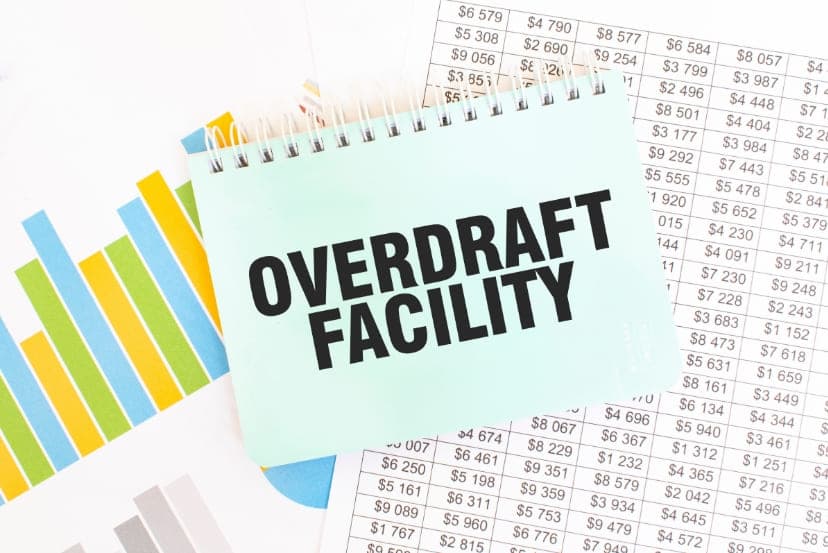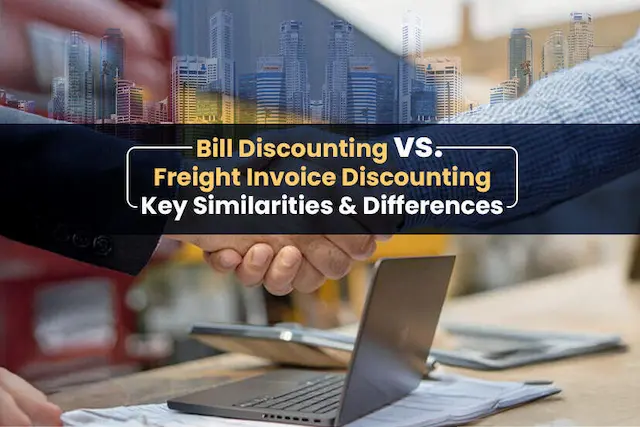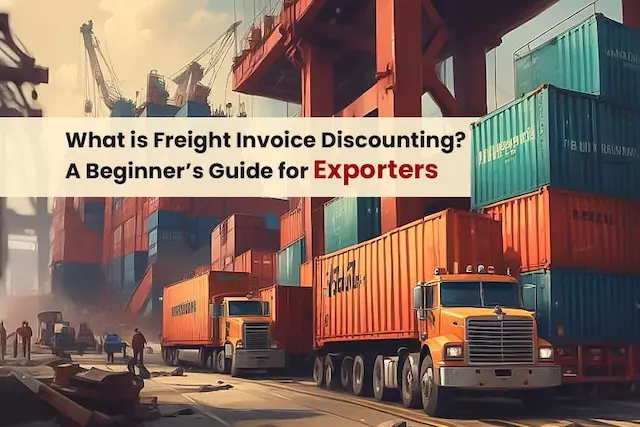Running a business often involves unexpected expenses or urgent payments, and sometimes the funds available in your account may not be enough to cover these costs. This situation can lead to problems like bounced cheques and additional charges. To avoid such issues, many businesses use a banking option known as an Overdraft Facility.
An overdraft facility allows you to spend more money than you have in your account, up to a certain limit. It’s a helpful tool to manage cash flow and handle financial shortfalls.
What is an Overdraft?
An overdraft is a service provided by banks where you can continue to withdraw money from your account even when the balance reaches zero. The bank lends you the extra money, which you must repay with interest or a fee. This borrowed amount is usually required to be paid back within a specific period.
Is an Overdraft the Same as a Loan?
Yes, an overdraft is similar to a loan because you are borrowing money from the bank. However, there is a key difference: with an overdraft, you only pay interest on the amount you’ve borrowed, not on the entire overdraft limit. This means you’re only charged for what you actually use.
What is an Overdraft Facility?
An overdraft facility is a pre-arranged agreement with your bank that allows you to overdraw your account up to a certain limit. This facility is often linked to current accounts used by businesses, but it can also be available to individuals with savings accounts. The main features of an overdraft facility include:
- Credit Limit: The bank sets a limit on how much you can borrow. This limit is determined based on several factors, including your credit history and the financial health of your business.
- Interest Rate: You only pay interest on the amount you borrow, not on the total credit limit. The interest is usually calculated daily and added to your account at the end of each month.
- No Prepayment Charges: Unlike some other loans, there are no penalties for repaying your overdraft early.
- No Installments: You don’t have to make regular payments. You can pay back the borrowed amount whenever it’s convenient, though it’s good practice to repay promptly to avoid high interest charges.
- Joint Accounts: If you have a joint account, both account holders are responsible for repaying the overdraft.
How Does an Overdraft Facility Work?
When your account balance drops to zero, the overdraft facility kicks in, allowing you to continue making payments or withdrawals. As you use the overdraft, you’ll be charged interest or a fee based on how much you’ve borrowed and how long it remains unpaid.
Here’s a simple example:
Imagine you have Rs 3000 in your account but need to pay Rs 5000. Without an overdraft, your cheque might bounce, leading to additional charges. However, if your bank has granted you an overdraft of Rs 2000, the payment will go through. The bank will consider the extra Rs 2000 as a loan, and you’ll need to repay it along with interest.
How to Repay an Overdraft
Repaying an overdraft is flexible. You can pay back the amount in full or in parts, as long as you stay within the bank’s guidelines. The more you repay, the less interest you’ll be charged. Once you’ve repaid the full amount, you can use the overdraft facility again if needed.
How is Interest Calculated on an Overdraft?
Interest on an overdraft is calculated daily based on the outstanding amount. If you borrow Rs 2000 today and repay Rs 1000 tomorrow, the interest will be charged on Rs 2000 for one day and on Rs 1000 for the next day. This daily calculation continues until the entire amount is repaid.
How to Apply for an Overdraft Facility
Applying for an overdraft facility is straightforward. You can visit your bank or apply online. The bank will review your application and may ask for financial documents like bank statements, income proofs, and business records. If your application is approved, the overdraft facility will be added to your account, and you’ll be notified.
For businesses, it’s also possible to get a pre-approved overdraft, where the facility is automatically activated when your balance reaches zero.
Who is Eligible for an Overdraft Facility?
Eligibility for an overdraft depends on several factors:
- Financial Health: The bank will check your financial statements, tax records, and bank account activity to determine if you can repay the overdraft.
- Business Age: If you’re applying on behalf of a business, the bank may require the business to be operational for at least two years.
- Collateral: Some overdrafts are secured by collateral like property or fixed deposits. The bank will assess the value of this collateral before granting the facility.
- Credit Score: A good credit score is important. Banks typically look for a CIBIL score of 750 or higher.
Documents Required for an Overdraft Application
To apply for an overdraft, you’ll need to provide several documents, including:
- KYC Documents: Identification proof such as PAN Card, Aadhaar Card, or Voter ID.
- Income Proof: Income tax returns, balance sheets, and profit & loss statements.
- Business Documents: GST registration, company profile, bank statements, etc.
- Loan Documents: If you’ve taken loans before, the bank may ask for details like sanction letters and repayment records.
Advantages of an Overdraft Facility
- Prevents Transaction Failures: With an overdraft, you can make payments even if your account balance is low, avoiding the embarrassment and cost of bounced cheques.
- Flexible Repayment: You can repay the borrowed amount in full or in installments whenever it’s convenient for you.
- Pay Interest Only on Borrowed Amount: Unlike other loans where interest is charged on the entire amount, with an overdraft, you only pay for what you use.
Disadvantages of an Overdraft Facility
- Higher Interest Rates: Overdrafts usually come with higher interest rates compared to other types of loans, which can make them expensive if used for long periods.
- Limited Borrowing: The amount you can borrow is usually limited and may not be sufficient for large expenses.
- Bank Dependency: The bank can change your credit limit or demand repayment sooner than expected, which can be inconvenient.
Difference Between Overdraft and Other Loans
Overdrafts differ from regular loans in a few key ways:
- Interest Calculation: Interest is calculated daily on the borrowed amount, rather than on a fixed loan amount.
- No Monthly Payments: There’s no requirement to make monthly payments, giving you more flexibility.
- Credit Limit: Overdrafts have a set limit, which is often lower than other types of loans.
Difference Between Overdraft and Cash Credit
While both overdrafts and cash credit are used to manage working capital, they differ in certain aspects:
- Collateral: Cash credit is often secured against inventory or stock, whereas overdrafts are usually secured against property or other assets.
- Borrowing Limit: Cash credit limits can be adjusted based on business performance, while overdraft limits are fixed.
Also Read: Different Types of Working Capital Loan Explained
FAQs on Overdraft
- Is Overdraft Secured or Unsecured?
An overdraft can be either secured (backed by collateral) or unsecured (based on creditworthiness alone). - How Does Overdraft Appear on the Balance Sheet?
Overdrafts are listed as a current liability on the balance sheet since they represent a short-term borrowing. - Are There Any Additional Fees for Overdrafts?
Yes, banks may charge a processing fee and daily interest based on the amount borrowed. - Does an Overdraft Affect Your Credit Score?
Using an overdraft responsibly won’t negatively impact your credit score, but exceeding your limit or failing to repay on time can. - Can an Overdraft Be Repaid in Installments?
Yes, you can repay the overdraft in installments or in full, depending on your preference.
An overdraft facility can be a valuable tool for managing cash flow, but it’s important to use it wisely to avoid high interest charges. Understanding how it works and how to apply for it can help you make the most of this banking service.
Also Read: Types Of Trade Finance Products: Financing Foreign Trade




